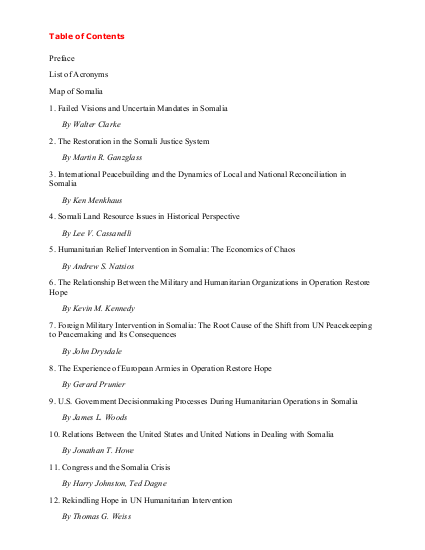
The U. S. -led intervention in Somalia that began in December 1992 is the most significant instance to date of peacemaking by the international community. The heady promise of Operation Restore Hope and the subsequent disappointments have had a resounding impact on the policies of Western governments and the UN as they have tried to cope with humanitarian emergencies in Rwanda, Bosnia, and elsewhere. However, it is questionable how correct the lessons so quickly derived from the Somalia experience actually were. At the same time, many important organizational and operational innovations during the Somalia exercise have not received sufficient attention. Learning from Somalia is therefore critical if the international community is to respond better to tragedies that threaten millions of human lives. Contributors to this book, many of whom are policymakers who were either in Mogadishu or Washington during the relief missions, examine the intervention in Somalia and draw lessons for future peacekeeping operations. They analyze many aspects of peacemaking that are not well understood, including efforts to rebuild the police force, the dynamics of the economy, the relationship between the military and nongovernmental organizations, and the performance of European armies. The book also discusses international politics surrounding the crisis, especially the relationship between the United States and the UN and the legal justifications for intervention. The concluding chapters discuss the prospects for intervention efforts in light of the Somalia experience.
